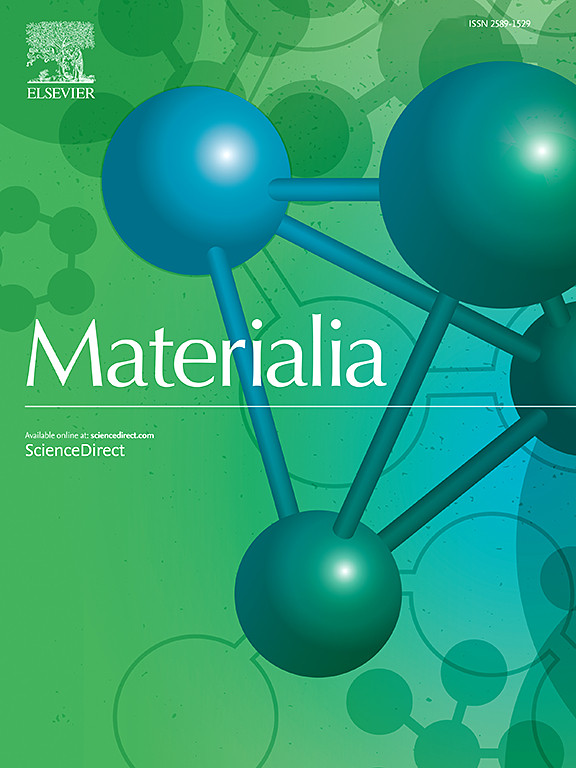Crystal structure and Mulliken charge analysis of Gd3+doped bismuth silicate
IF 3
Q2 MATERIALS SCIENCE, MULTIDISCIPLINARY
引用次数: 0
Abstract
This article uses Materials Studio software, based on first-principles and density functional theory, to calculate and analyze the impact of Gd3+ doping on the crystal structure and the Mulliken charge distribution of bismuth silicate (Bi4Si3O12, BSO). The virtual crystal approximation method is uesd to explore the influence of different doping ratios (1/12, 1/6, and 1/3) of Gd3+ on the BSO crystal. Through Mulliken charge analysis, it is found that a high proportion of Gd3+ doping can affect the symmetry of the crystal structure. As the doping ratio of Gd3+ increases,the length of the Gd-O bond exhibits a trend of first increasing and then decreasing, showing covalent bond properties, and when the doping ratio of Gd3+ reaches 1/3, the length of the Gd-O bond reaches its minimum value. With an increase in the Gd3+ doping ratio, the Bi-O bond length first decreases and then increases, reaching its minimum value when the Gd3+ doping ratio is increases to 1/6. This indicates that when Gd3+ is doped into the BSO crystal, the covalency between the Gd-O atoms is more significant at a doping ratio of 1/3, and the covalency between the Bi-O atoms is more significant at a doping ratio of 1/6.

掺Gd3+硅酸铋的晶体结构及Mulliken电荷分析
本文利用Materials Studio软件,基于第一性原理和密度泛函理论,计算分析了Gd3+掺杂对硅酸铋(Bi4Si3O12, BSO)晶体结构和Mulliken电荷分布的影响。采用虚拟晶体近似方法探讨了Gd3+不同掺杂比例(1/12、1/6、1/3)对BSO晶体的影响。通过Mulliken电荷分析发现,高比例的Gd3+掺杂会影响晶体结构的对称性。随着Gd3+掺杂比的增加,Gd-O键的长度呈现先增加后减小的趋势,表现出共价键的性质,当Gd3+掺杂比达到1/3时,Gd-O键的长度达到最小值。随着Gd3+掺杂比的增加,Bi-O键长先减小后增大,当Gd3+掺杂比增加到1/6时达到最小值。这表明当Gd3+掺杂到BSO晶体中时,Gd-O原子之间的共价在掺杂比为1/3时更为显著,Bi-O原子之间的共价在掺杂比为1/6时更为显著。
本文章由计算机程序翻译,如有差异,请以英文原文为准。
求助全文
约1分钟内获得全文
求助全文
来源期刊

Materialia
MATERIALS SCIENCE, MULTIDISCIPLINARY-
CiteScore
6.40
自引率
2.90%
发文量
345
审稿时长
36 days
期刊介绍:
Materialia is a multidisciplinary journal of materials science and engineering that publishes original peer-reviewed research articles. Articles in Materialia advance the understanding of the relationship between processing, structure, property, and function of materials.
Materialia publishes full-length research articles, review articles, and letters (short communications). In addition to receiving direct submissions, Materialia also accepts transfers from Acta Materialia, Inc. partner journals. Materialia offers authors the choice to publish on an open access model (with author fee), or on a subscription model (with no author fee).
 求助内容:
求助内容: 应助结果提醒方式:
应助结果提醒方式:


